When diamonds are featured in movies, well, most of the time they can’t use real diamonds.
I mean you can’t have thousands to millions of dollars worth of props which are not only easy to lose, but easy to steal.
I can usually tell the diamonds in movies are glass or some other non-diamond material.
You see diamonds produce fire, and it’s not something that can be faked. Ok maybe more recent movies might take the time to digitize the fire diamonds produce, but even that is difficult to fake.
When we think about what makes a diamond beautiful, it has to do with two main things: fire and brilliance.
It’s easy to think of fire and brilliance as being the same thing: the sparkle.
But brilliance and fire have distinctly different definitions. Brilliance is what you’d use to refer to the diamond’s brightness. (Scintillation is an even more specific term which refers to small flashes of bright white light and not the diamond’s overall bright light return.)
Fire is what we call the colorful flashes. Specifically the dispersion of white light into all the colors seen in rainbows. That is the result of refraction.
So to recap:
brilliance = sparkles,
fire = color sparkles.
The Light Makes The Fire
Since we are delving into the science behind fire we have to understand how light “works”.
Well, we don’t know everything there is to know about how light works, but let’s start by slipping in a definition for light.
Visible light is part of a spectrum of electromagnetic energy that travels in waves.
White light is made up of many wavelengths, each corresponding to a specific color.
When light enters a transparent substance such as water, glass, or diamond, it changes speed.
That’s right, light slows down significantly.
This slowing process causes light to refract. We can even say that light bends.
When light exits the material back into air it regains its original speed.
Amazing, I know, right?!
So think about it: do you think different wavelengths bend at different rates?
If you said, yes, then you’d be 100% correct.
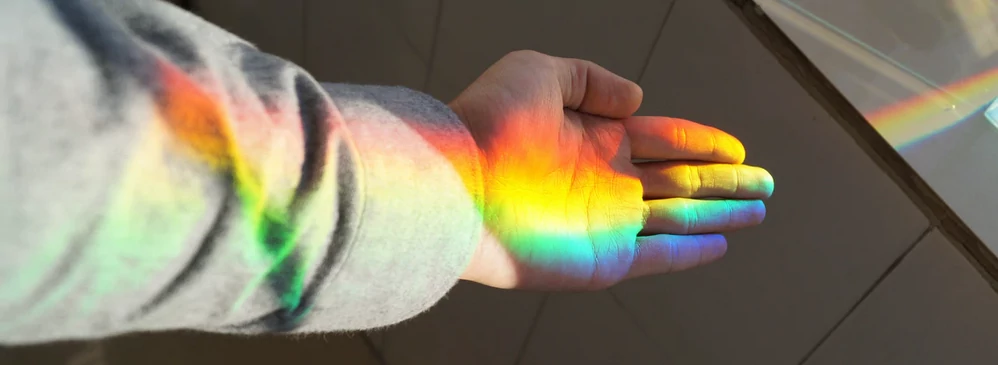
The different parts of white light bend and become separated. This is what they mean when they talk about dispersion. Light is ‘dispersed’ or separated into many different frequencies, which we see as different colors.
It is this dispersion that lets us see the individual colors of a rainbow. We also see this effect when sun hits a prism and makes a rainbow on the wall.
And of course it’s the same effect which causes what we call fire to be produced by a diamond.
The video shows two diamonds of different cut qualities. Their ability to produce fire depends on how well each diamond is cut. The diamond on the left is from Whiteflash’s A CUT ABOVE® range and on the right a GIA Triple Excellent.
The Magic of Fire
Seeing fire in a diamond is similar to the experience of seeing a rainbow after the rain.
I’m sure I’m not the only person who has blurted out “Rainbow!” to no one in particular when seeing a beautiful rainbow grace the sky.
It is always remarkable in its beauty and fleeting in its presence, which makes it all the more special.
Like the colors of a rainbow, fire is light that has been “disentangled” and separated into the individual colors of the spectrum by a prismatic effect.
When we see a rainbow after rain it’s the droplets of water in the air which acts as the prism as light travels through it.
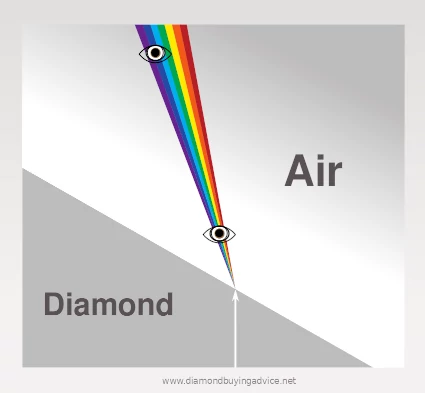
A faceted diamond behaves similarly. It acts as a prism. Light slows down upon entering and speeds up upon exiting the facets.
But here’s the key to the colors being visible:
The precise alignment of a diamond’s facets is critical in determining how probable it is to see fire events in a diamond. And I mean P R E C I S E.
When a light beam traveling at full speed, yes 186,000 miles per second, goes from air and enters a transparent material such as glass or diamond, it slows way down.
The more it is slowed down the greater the material will refract the light.
This is what is meant by “Refractive Index”.
Diamond happens to have a very high refractive index. The higher the refractive index, the greater the potential for dispersion.
While diamond material has a very high potential to exhibit fire, the quality of the cut is the key to whether that fire potential is realized.
The Importance of Diamond Proportions
By calculating the path light takes in a diamond it is possible to calculate the amount and location of dispersion of the light that the diamond is returning to the eye.
The basic proportions must be within a relatively narrow range to provide a foundation for the generation of significant fire.
The Role of the Light Source
You’ve heard the saying, Where there’s smoke there’s fire.
Well where there’s no light, there’s no diamond fire.
Fire is dependent on the availability of light. You won’t see any fire in the dark, or if the available light is not being directed in some way at the diamond.
Like the aftermath of a rain shower that does not produce a rainbow, a well cut diamond in certain types of lighting environments will not produce fire.
Singular, direct light sources of small angular size are more likely to produce fire than large diffuse sources.
Outdoors, in direct sunlight, a diamond can exhibit excellent fire.

However, cloud cover will diffuse the available light. Fire then becomes less obvious.
While this might be an optimal lighting environment for observing a diamond’s brightness and contrast patterns, fire will be almost completely suppressed.
Indoor lighting with a number of individual lights of small angular size can produce a “fire friendly” environment to optimize our ability to observe fire.
You may find this type of lighting in restaurants, stores, and even in elevators!
By contrast, typical office lighting with long fluorescent tubes covered by plastic diffusers creates a lighting environment that suppresses fire.
Fortunately, LED lighting is becoming ever more common and often features multiple small sources which are good for the observation of fire. The videos on this page were created in a controlled lighting environment with multiple LED light sources.
The Role of the Observer
Whether an observer perceives fire depends on a number of factors
One of those factors is the viewing distance from the diamond. (see diagram above)
It even depends on the observer’s pupil size as the fan of spectral color falls across their pupil and a specific color gets clipped from the fan.
As a dispersed beam of light exits the diamond, the different wavelengths have different trajectories that cause them to fan out even further with distance, increasing the chance that they can be clipped.
This is why you might see fire in a diamond on someone’s hand in a dimly lit restaurant from several tables away!
The Role of Virtual Facets and Faceting Precision
The real work of light performance is done by what are called ‘virtual facets’.
These are areas of the diamond which reflect light back to the eye.
The number of virtual facets is greater than the number of actual cut facets.
This is because a single facet can reflect light rays from multiple sources and directions.
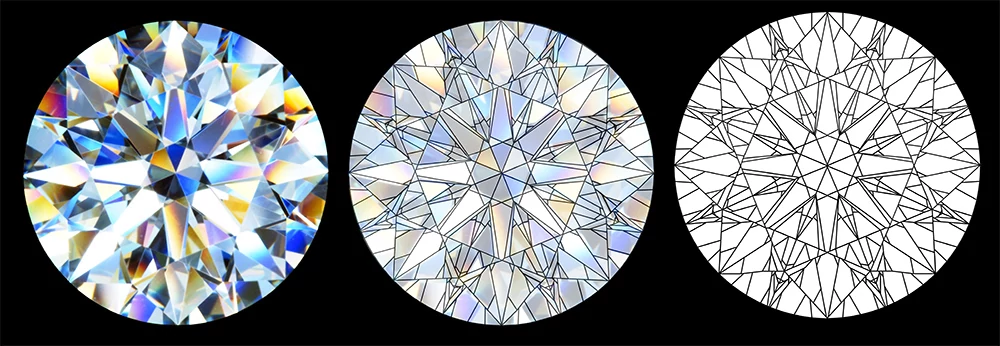
Therefore, the facet design must be one including some larger virtual facets.
Precise facet alignment in 3 dimensions (optical symmetry) is critical in making sure the virtual facet sizes prescribed by the design are faithfully produced and not broken up in a chaotic and unpredictable collection of very small virtual facets.
The craftsmanship of each facet is also critical to dispersion – they need to be polished to a perfectly flat mirror finish in order for the diamond to exhibit its full potential for fire.
The video above is the same video shown earlier, but shown in incremental mode giving a view of the fire effects of extremely small variations in angles.
Laboratory Grading of Fire
For a scientific, peer reviewed evaluation of fire see the light performance grading system developed by AGS Laboratories.
A 3-D scan of the actual diamond is mathematically calculated and ray-traced. In total the direction of 32,000 rays are calculated.
The diamond is graded for brightness, contrast, light leakage, and dispersion.
The grade of ideal (0) is only awarded if the aspect has no significant deficits.
In addition to being able to generate ASET light maps for light return, light leakage, and contrast, the AGSL system also can produce fire maps. They indicate the areas of the diamond capable of producing fire.
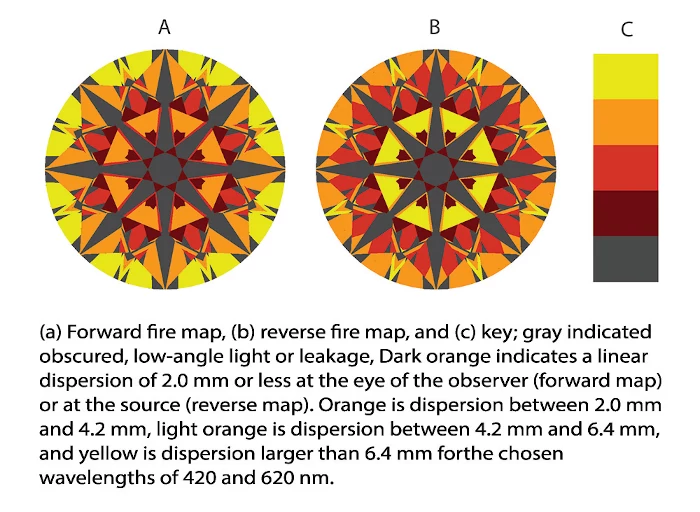
Fire is arguably the most magical aspect of diamond light performance and a key contributor to diamond beauty, even though it will not be exhibited in every lighting environment.
The facet design and craftsmanship of the cut are the keys to producing a fiery diamond.
Ideal cut diamonds with top levels of optical precision, such as the A CUT ABOVE® in the videos above, excel in producing fire.
In comparison to many GIA Triple Ex diamonds, the amount of additional fire produced by the highest cut quality is something you can’t miss.

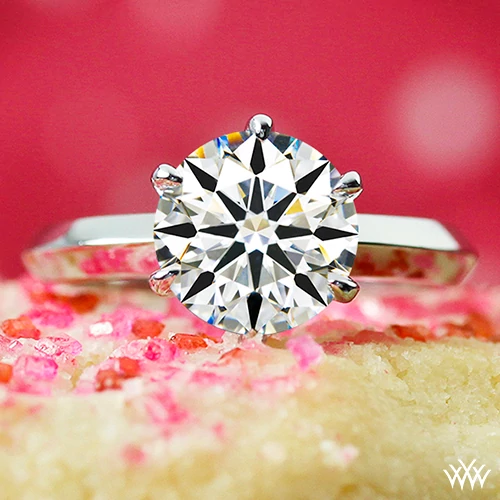
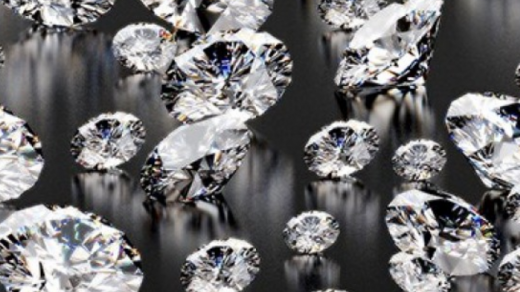
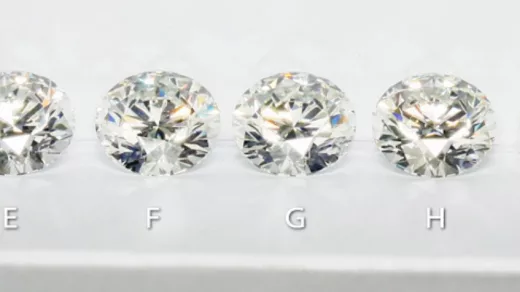
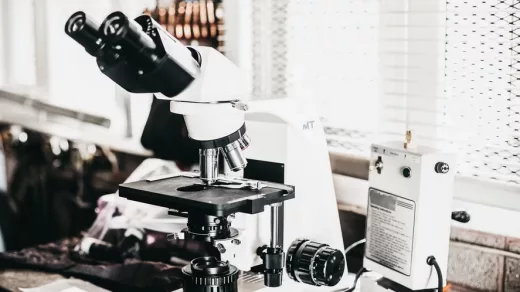
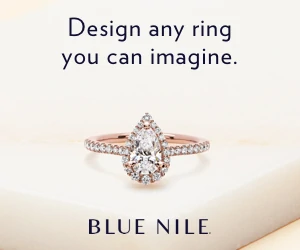
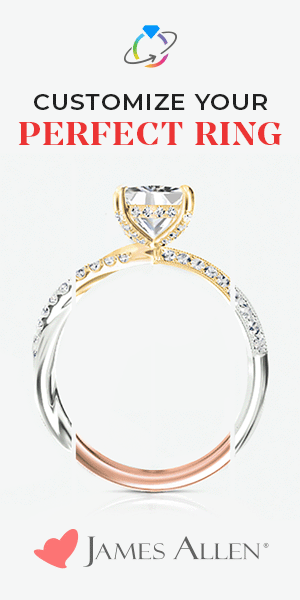
2 Responses
[…] The reason is that the ‘bang’ has everything to do with the fire and sparkle of the diamond. […]
[…] 💡 Diamond is a unique and almost “magical” stone. It acts as both a window and a mirror. So light entering the diamond, can be reflected back from the inside of the stone. Light also slows down when it travels in a diamond. Each frequency (each part of the color spectrum) is reflected back at a slightly different angle when light bounces off the inside of a diamond. This is why you see colorful flashes from a diamond. To read more on this see The Fascinating Science of Diamond Fire. […]